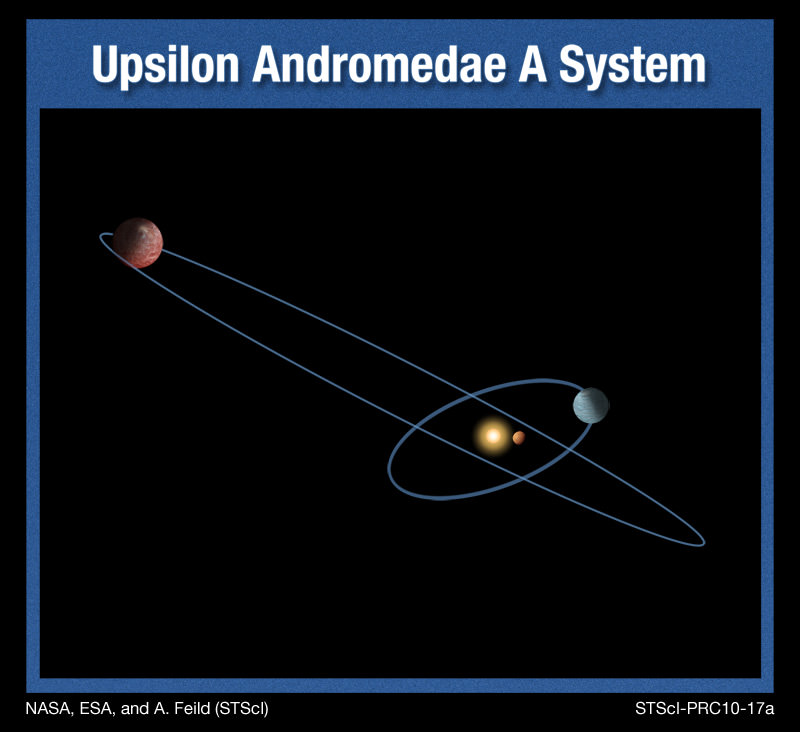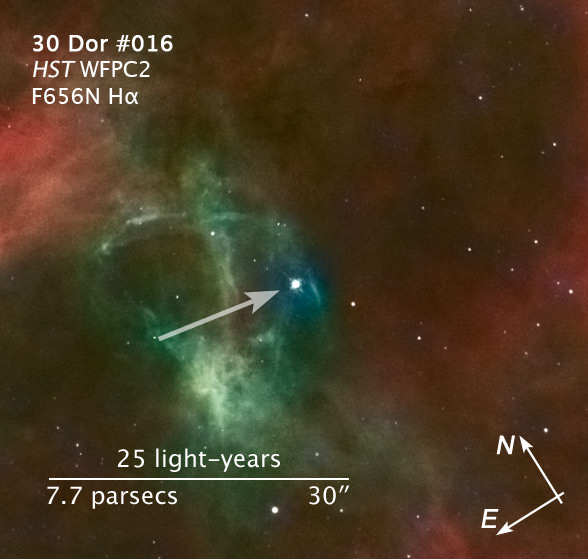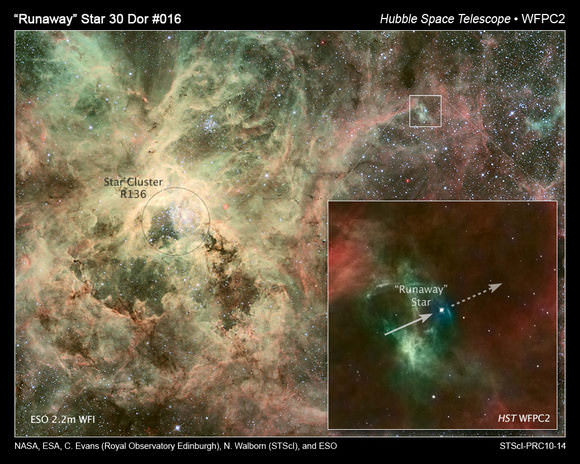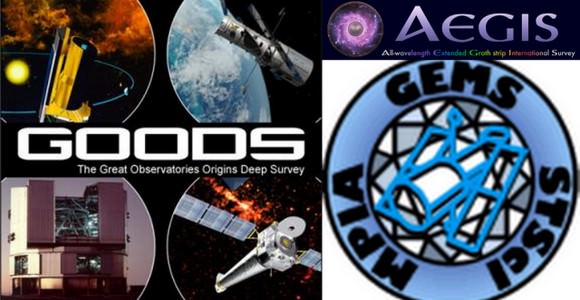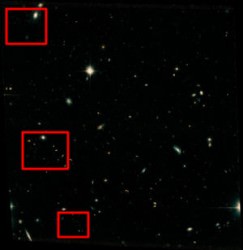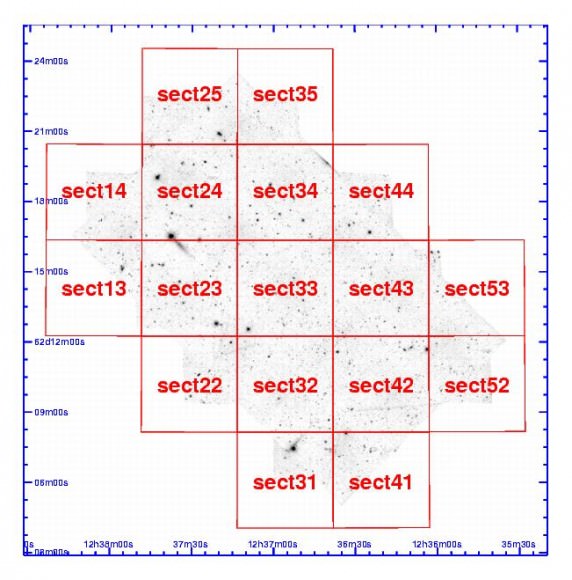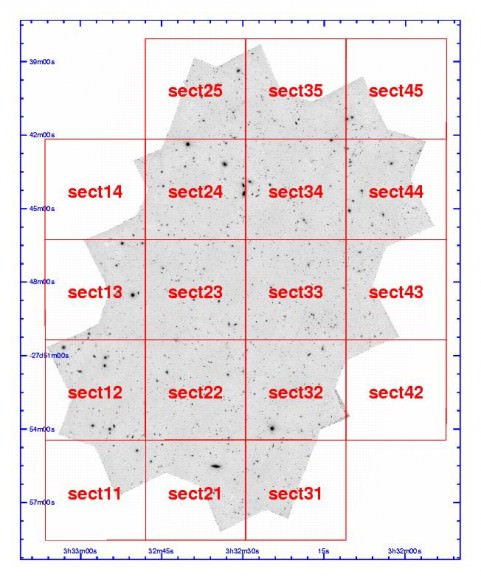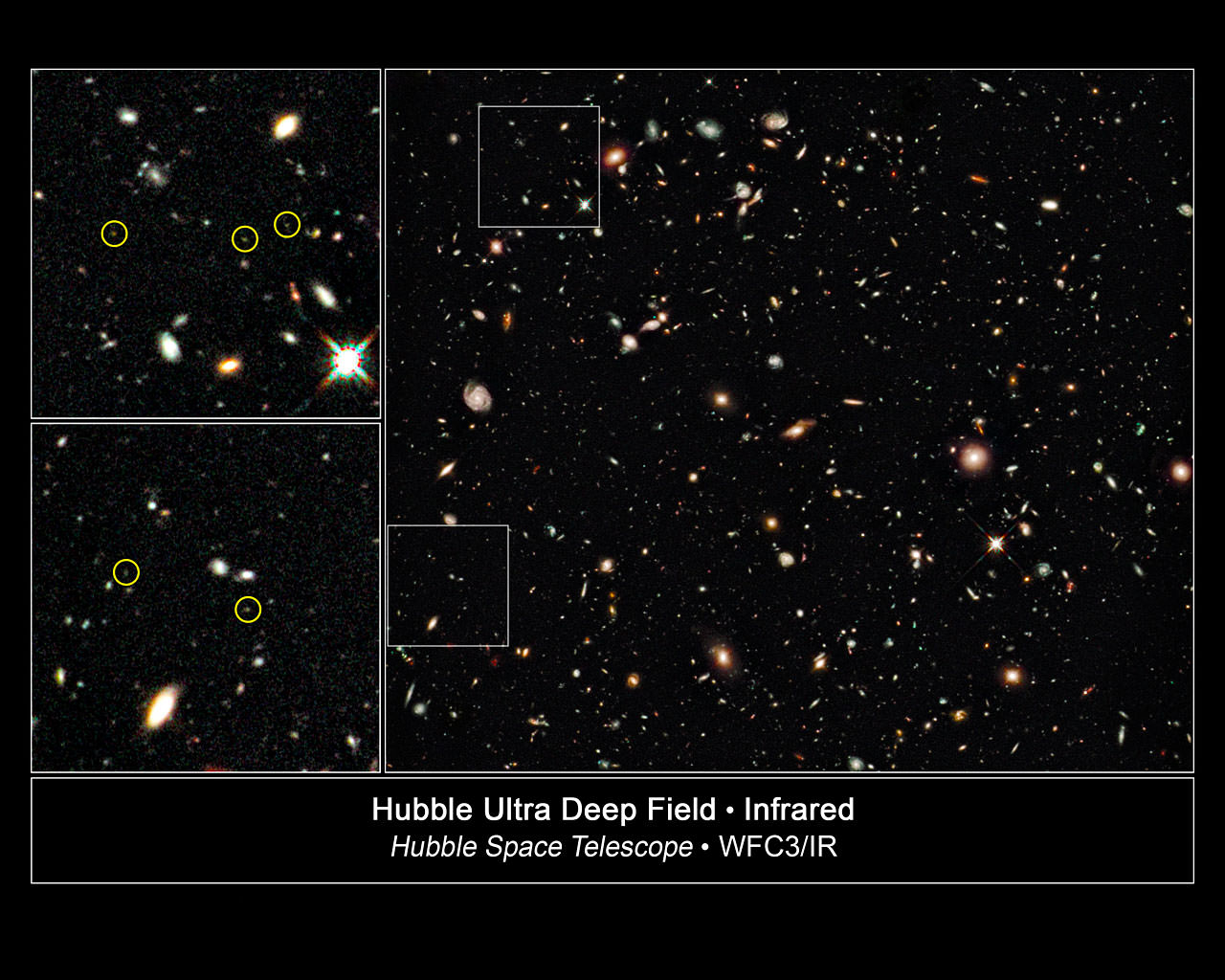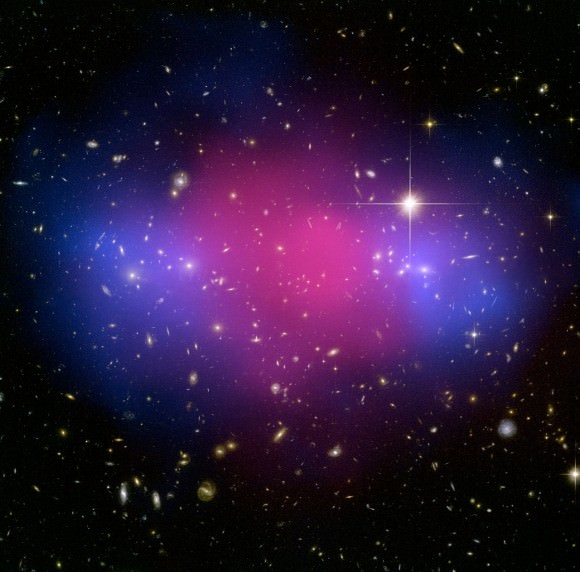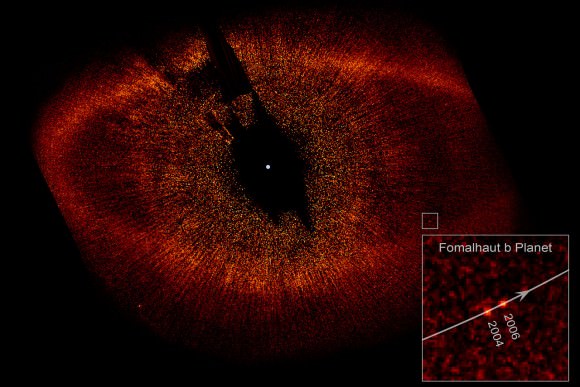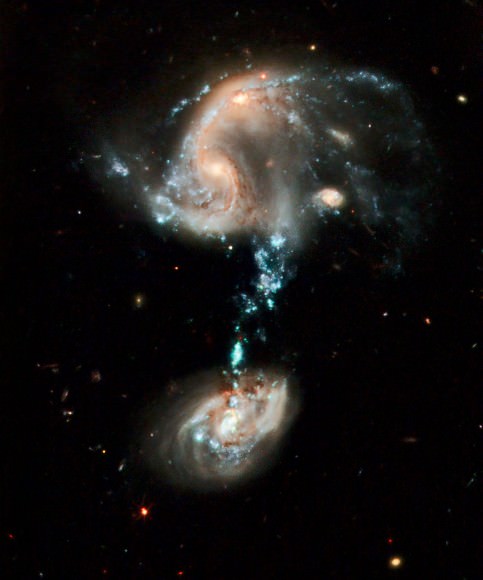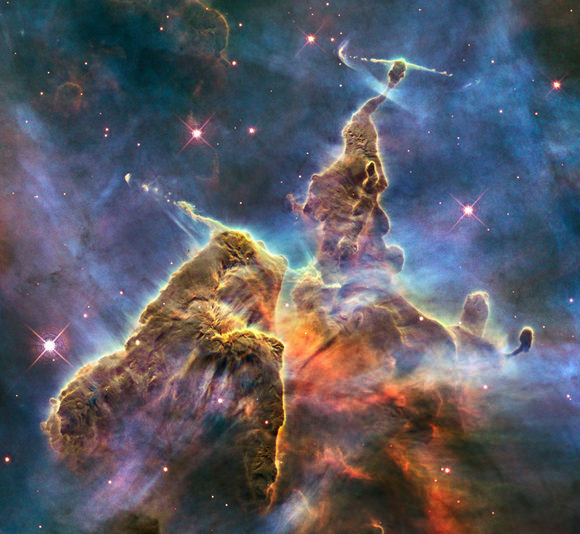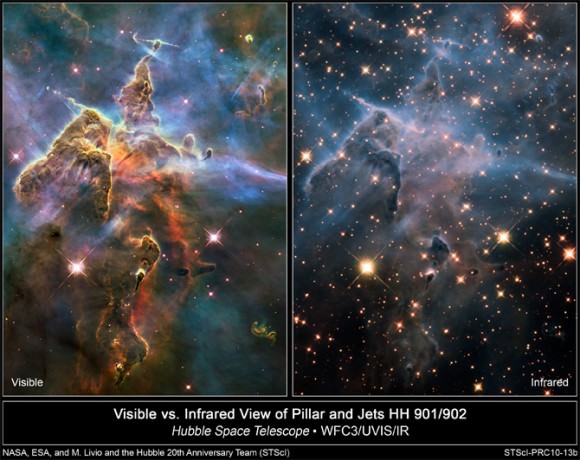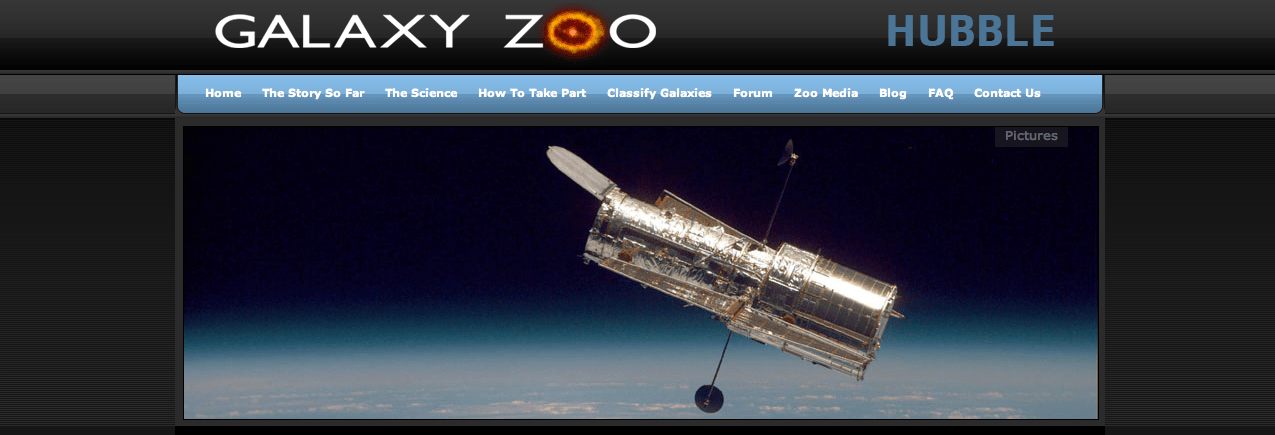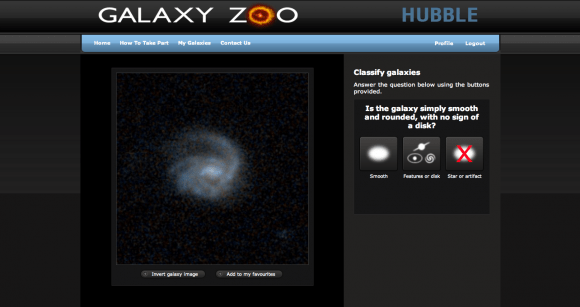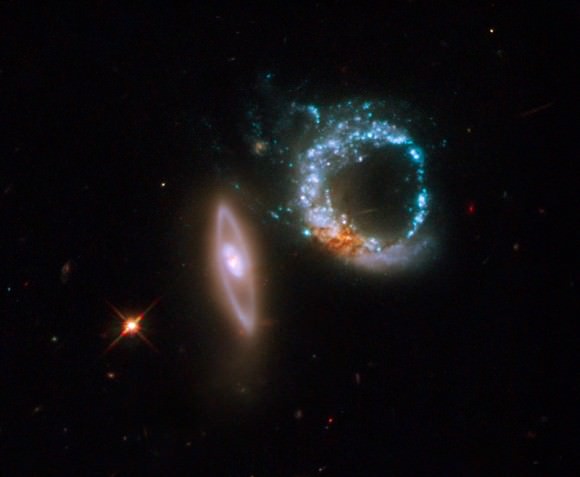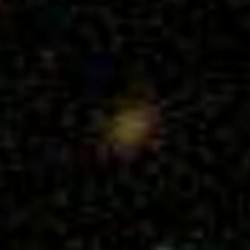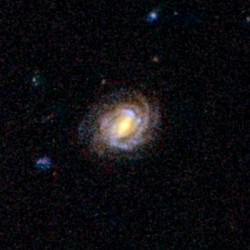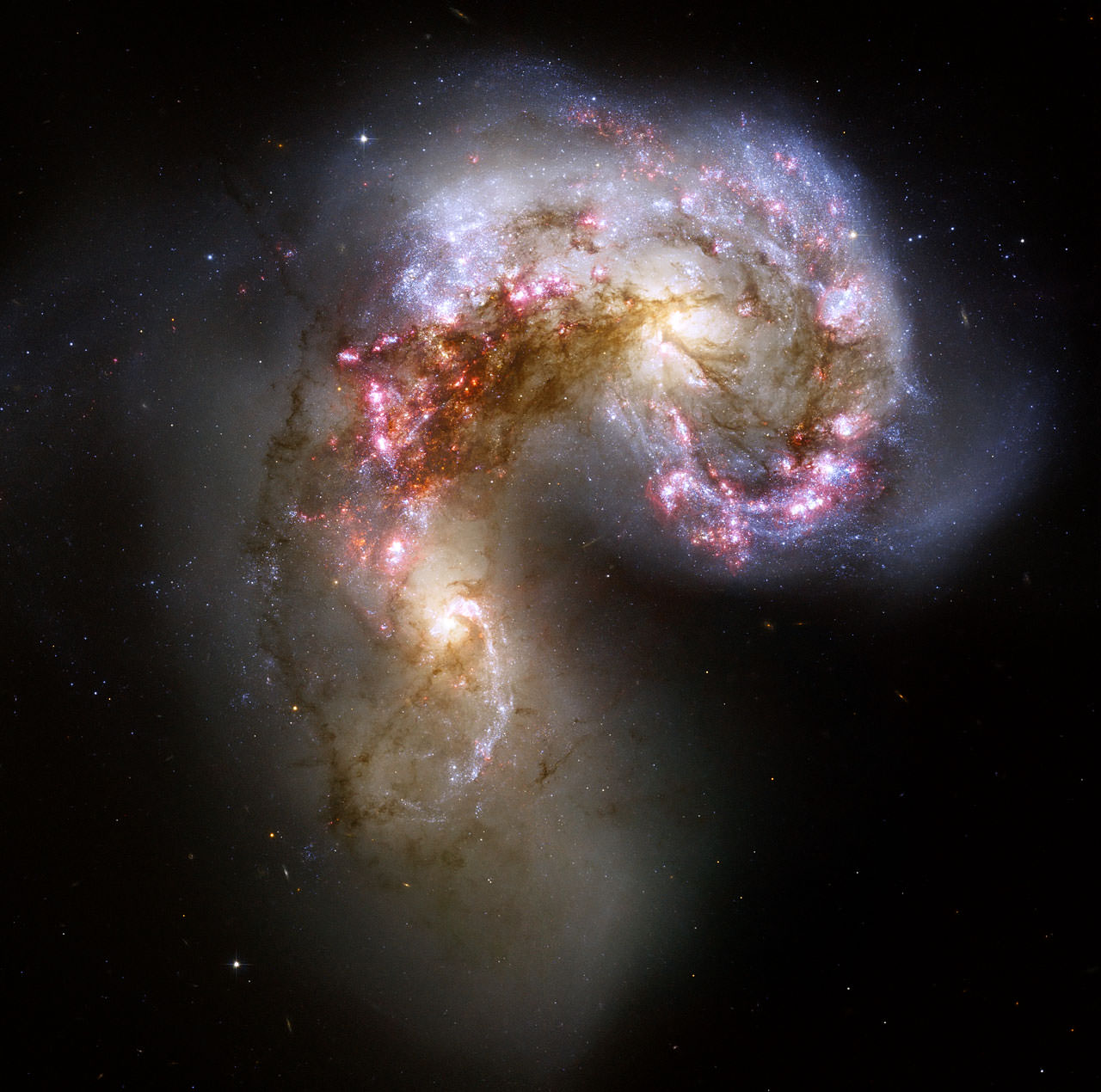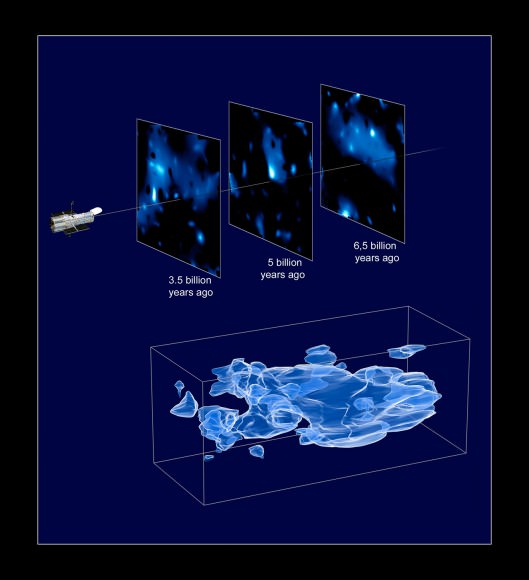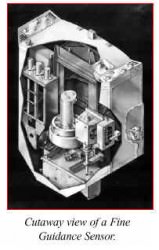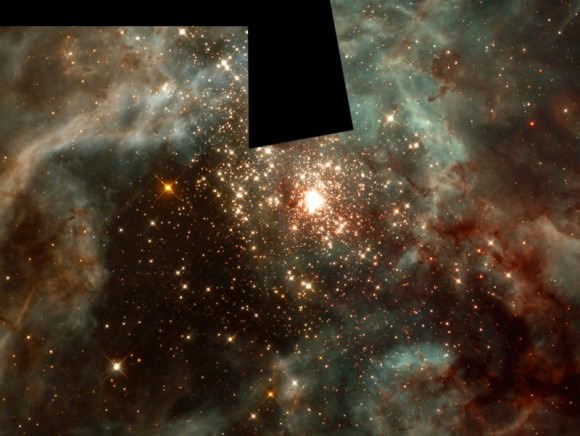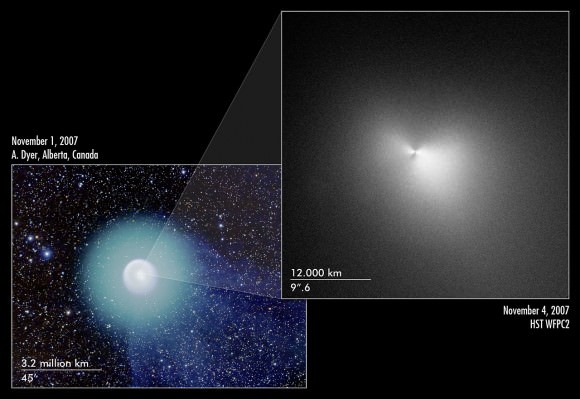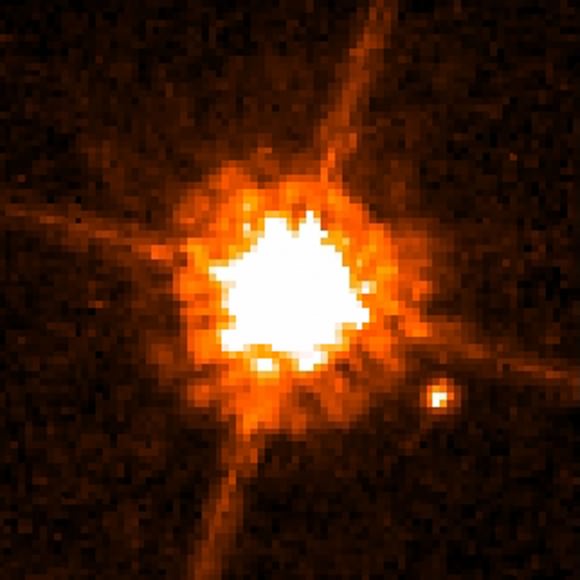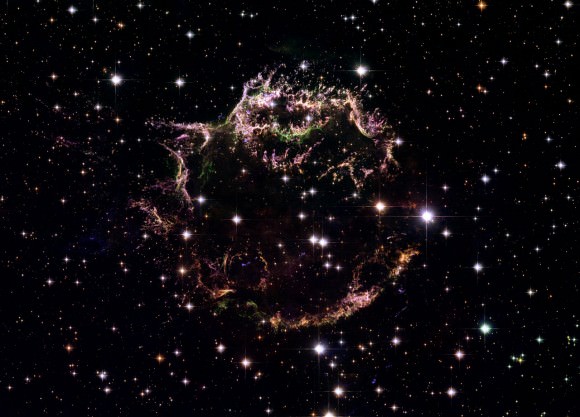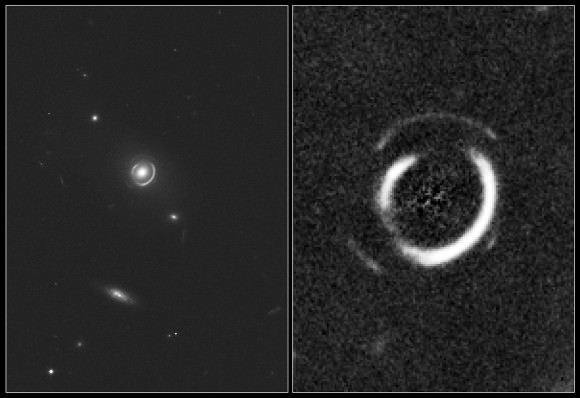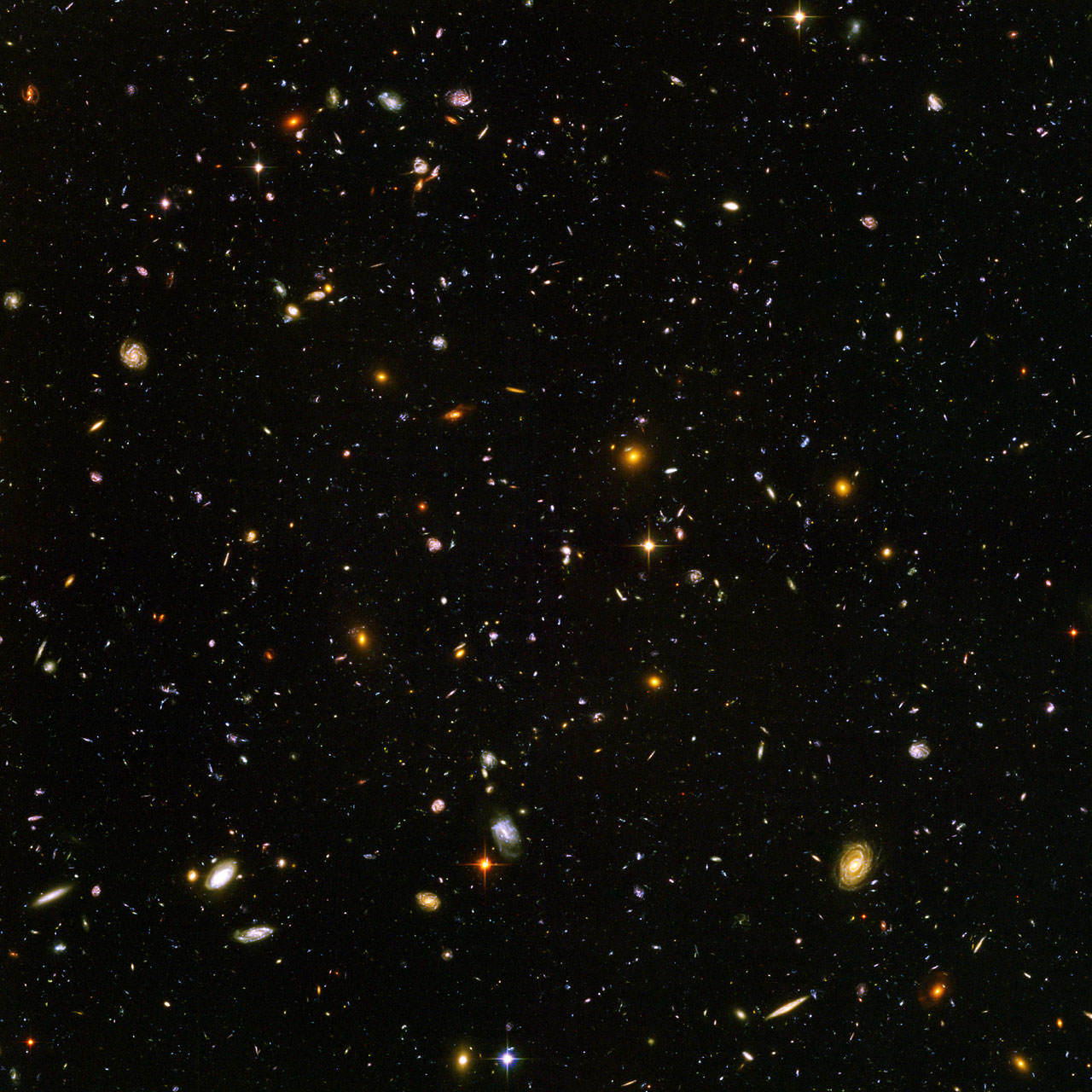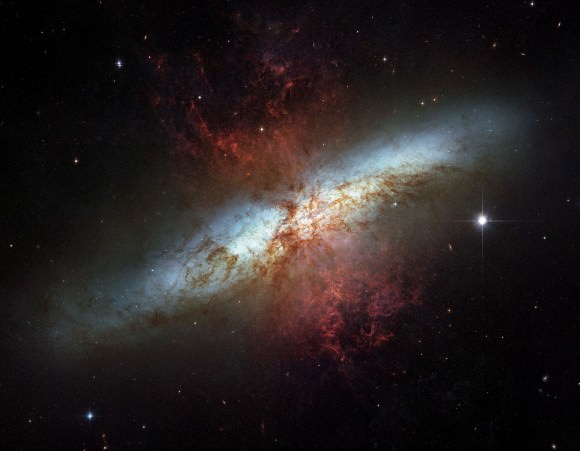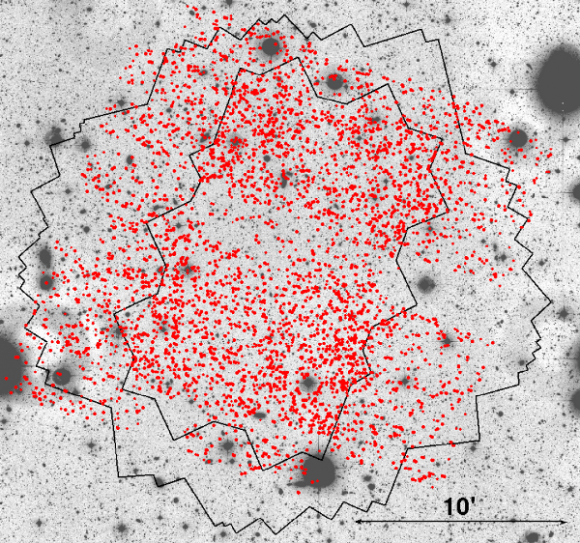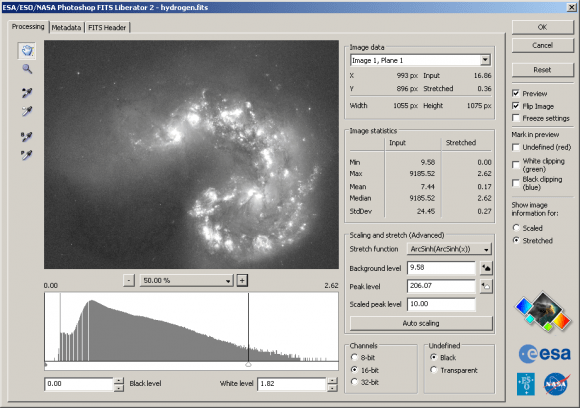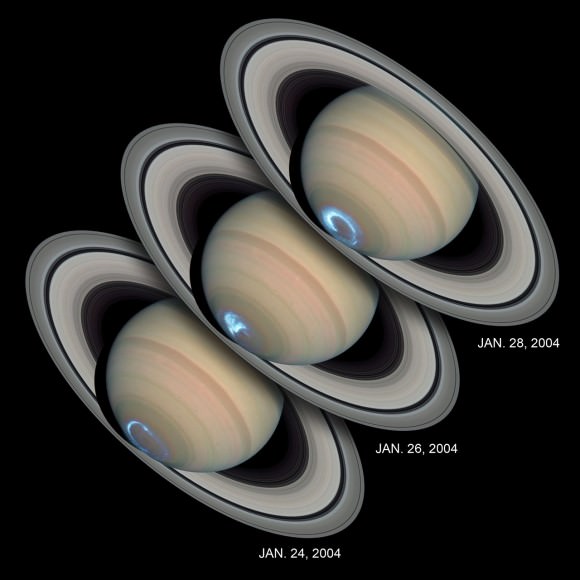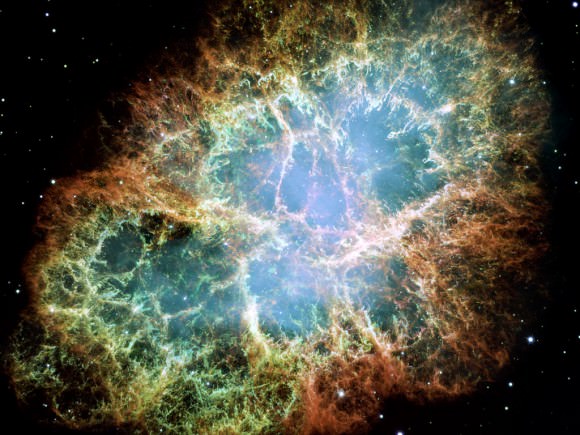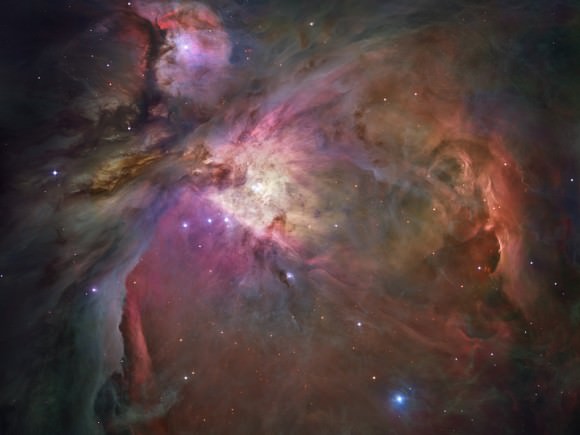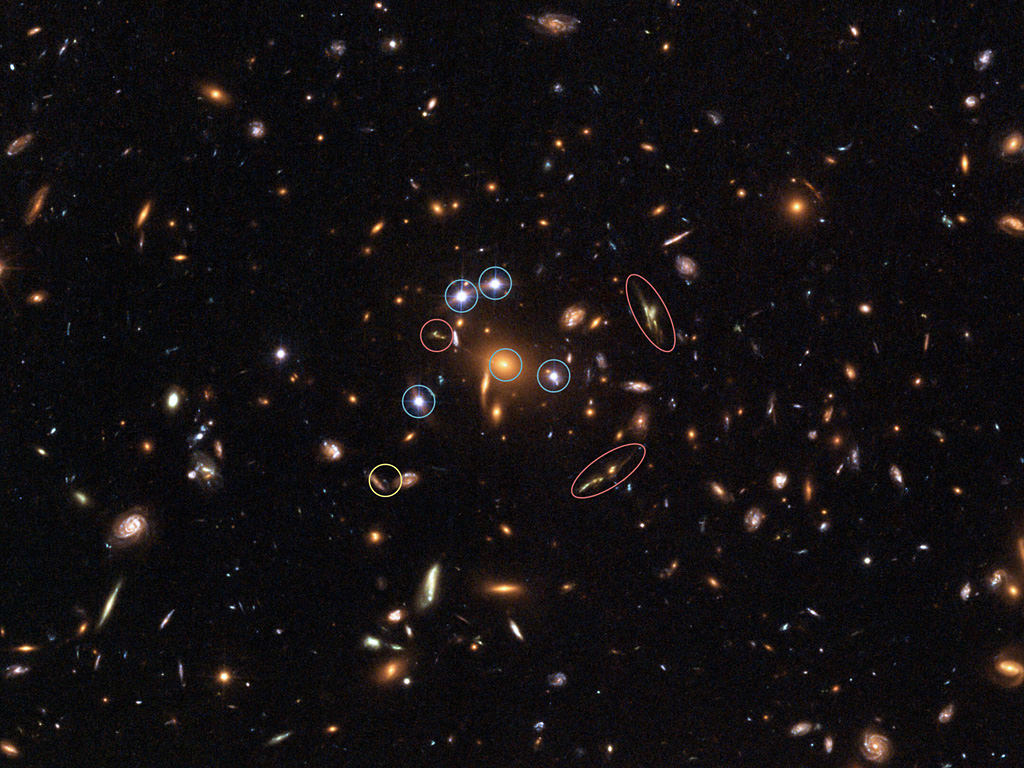[/caption]
Astronomers are finding that not only are there a wide range of different extrasolar planets, but there are different types of planetary systems, as well. “We’re not in Kansas anymore as far as solar systems go,” said Barbara McDonald from the University of Texas’ McDonald Observatory, at the American Astronomical Society meeting in Miami, Florida today. “The exciting thing is, we found another multi-planet system that is not at all like our own.”
A close look at the Upsilon Andromedae system with the Hubble Space Telescope, the Hobby-Eberly Telescope and other ground-based telescopes shows a whacky system where planets are out of tilt and have highly inclined orbits. The astronomers also found another planet, and also another star – this is likely a binary star system.
Even with Pluto’s inclined orbit, our solar system looks like an ocean of calm compared to Upsilon Andromedae.
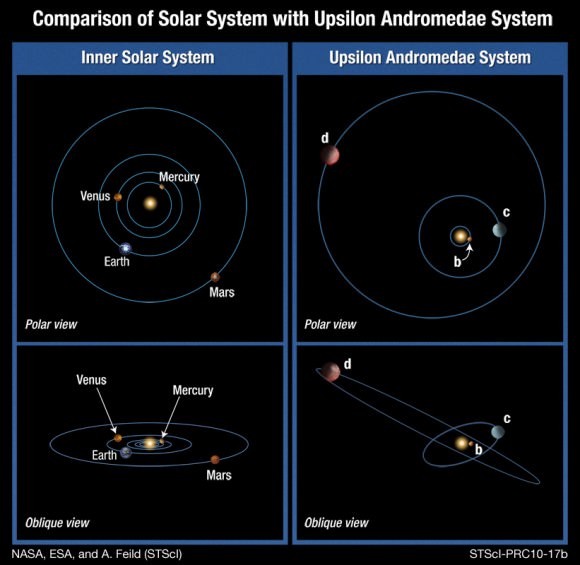
McDonald said these surprising findings will impact theories of how multi-planet systems evolve, and it shows that some violent events can happen to disrupt planets’ orbits after a planetary system forms.
“The findings mean that future studies of exoplanetary systems will be more complicated,” she said. “Astronomers can no longer assume all planets orbit their parent star in a single plane.” says Barbara McArthur of The University of Texas at Austin’s McDonald Observatory.
Similar to our Sun in its properties, Upsilon Andromedae lies about 44 light-years away. It’s a little younger, more massive, and brighter than the Sun. For just over a decade, astronomers have known that three Jupiter-type planets orbit the yellow-white star Upsilon Andromedae.
But after over a thousand combined observations, McDonald and her team uncovered hints that a fourth planet, e, orbits the star much farther out. They were also able to determine the exact masses of two of the three previously known planets, Upsilon Andromedae c and d. Much more startling, though, is that not all planets orbit this star in the same plane. The orbits of planets c and d are inclined by 30 degrees with respect to each other. This research marks the first time that the “mutual inclination” of two planets orbiting another star has been measured.
“Most probably Upsilon Andromedae had the same formation process as our own solar system, although there could have been differences in the late formation that seeded this divergent evolution,” McArthur said. “The premise of planetary evolution so far has been that planetary systems form in the disk and remain relatively co-planar, like our own system, but now we have measured a significant angle between these planets that indicates this isn’t always the case.”
Until now the conventional wisdom has been that a big cloud of gas collapses down to form a star, and planets are a natural byproduct of leftover material that forms a disk. In our solar system, there’s a fossil of that creation event because all of the eight major planets orbit in nearly the same plane. The outermost dwarf planets like Pluto are in inclined orbits, but these have been modified by Neptune’s gravity and are not embedded deep inside the Sun’s gravitational field.
So what knocked the Upsilon Andromedae system around?
“Possibilities include interactions occurring from the inward migration of planets, the ejection of other planets from the system through planet-planet scattering, or disruption from the parent star’s binary companion star, Upsilon Andromedae B,” McArthur said.
Or, the companion star – a red dwarf less massive and much dimmer than the Sun — could be the culprit. is.
“We don’t have any idea what its orbit is,” said team member Fritz Benedict. “It could be very eccentric. Maybe it comes in very close every once in a while. It may take 10,000 years.” Such a close pass by the secondary star could gravitationally perturb the orbits of the planets.”
The two different types of data combined in this research were astrometry from the Hubble Space Telescope and radial velocity from ground-based telescopes.
Astrometry is the measurement of the positions and motions of celestial bodies. McArthur’s group used one of the Fine Guidance Sensors (FGSs) on the Hubble telescope for the task. The FGSs are so precise that they can measure the width of a quarter in Denver from the vantage point of Miami. It was this precision that was used to trace the star’s motion on the sky caused by its surrounding — and unseen — planets.
Radial velocity makes measurements of the star’s motion on the sky toward and away from Earth. These measurements were made over a period of 14 years using ground-based telescopes, including two at McDonald Observatory and others at Lick, Haute-Provence, and Whipple Observatories. The radial velocity provides a long baseline of foundation observations, which enabled the shorter duration, but more precise and complete, Hubble observations to better define the orbital motions.
The fact that the team determined the orbital inclinations of planets c and d allowed them to calculate the exact masses of the two planets. The new information told us that our view as to which planet is heavier has to be changed. Previous minimum masses for the planets given by radial velocity studies put the minimum mass for planet c at 2 Jupiters and for planet d at 4 Jupiters. The new, exact masses, found by astrometry are 14 Jupiters for planet c and 10 Jupiters for planet d.
“The Hubble data show that radial velocity isn’t the whole story,” Benedict said. “The fact that the planets actually flipped in mass was really cute.”
The fourth planet is so far out, that its signal does not reveal the curvature of its orbit.
The 14 years of radial velocity information compiled by the team uncovered hints that a fourth, long-period planet may orbit beyond the three now known. There are only hints about that planet because it’s so far out that the signal it creates does not yet reveal the curvature of an orbit. Another missing piece of the puzzle is the inclination of the innermost planet, b, which would require precision astrometry 1,000 times greater than Hubble’s, a goal attainable by a future space mission optimized for interferometry.
Sources: HubbleSite, AAS Press conference

